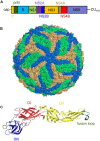Zika Virus: What Have We Learnt Since the Start of the Recent Epidemic?
- PMID: 28878742
- PMCID: PMC5572254
- DOI: 10.3389/fmicb.2017.01554
Zika Virus: What Have We Learnt Since the Start of the Recent Epidemic?
Abstract
Zika is a viral disease transmitted mainly by mosquitoes of the genus Aedes. In recent years, it has expanded geographically, changing from an endemic mosquito-borne disease across equatorial Asia and Africa, to an epidemic disease causing large outbreaks in several areas of the world. With the recent Zika virus (ZIKV) outbreaks in the Americas, the disease has become a focus of attention of public health agencies and of the international research community, especially due to an association with neurological disorders in adults and to the severe neurological and ophthalmological abnormalities found in fetuses and newborns of mothers exposed to ZIKV during pregnancy. A large number of studies have been published in the last 3 years, revealing the structure of the virus, how it is transmitted and how it affects human cells. Many different animal models have been developed, which recapitulate several features of ZIKV disease and its neurological consequences. Moreover, several vaccine candidates are now in active preclinical development, and three of them have already entered phase I clinical trials. Likewise, many different compounds targeting viral and cellular components are being tested in in vitro and in experimental animal models. This review aims to discuss the current state of this rapidly growing literature from a multidisciplinary perspective, as well as to present an overview of the public health response to Zika and of the perspectives for the prevention and treatment of this disease.
Keywords: Guillain–Barré syndrome; antivirals; epidemiology; flavivirus; microcephaly.
Figures





References
-
- Ahmed A. (2016). El Salvador’s Advice on Zika Virus: Don’t Have Babies. The New York Times. Available at: http://www.nytimes.com/2016/01/26/world/americas/el-salvadors-advice-on-... (accessed January 25 2016).
Publication types
LinkOut - more resources
Full Text Sources
Other Literature Sources

